Unveiling the Enigmatic Realm of Sperm Whales: A Captivating Exploration
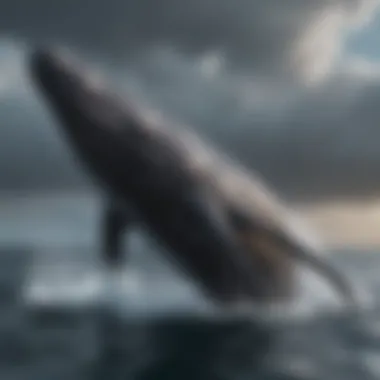
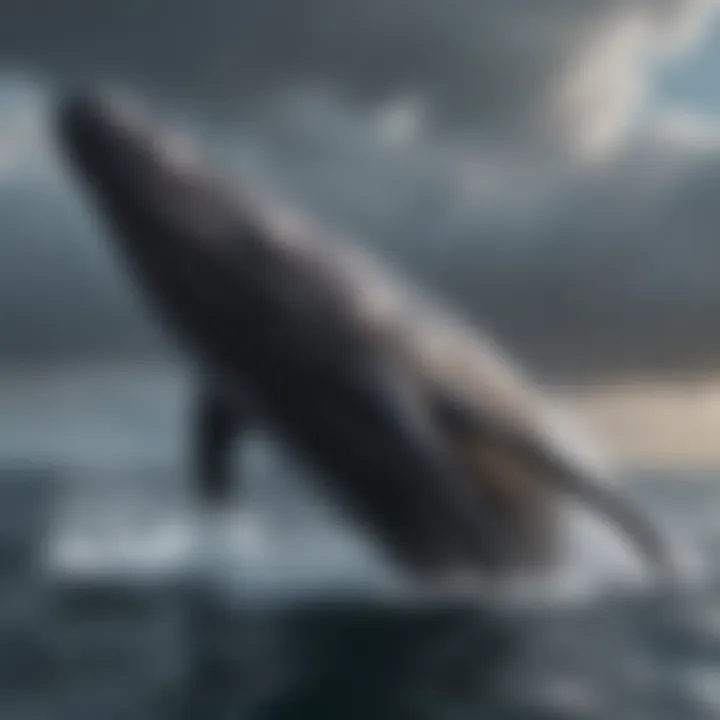
Overview of the Topic
Sperm whales - these magnificent creatures of the deep oceans, command attention for their remarkable characteristics and behaviors. They are the largest toothed whales and possess a unique spermaceti organ in their heads, contributing to their distinctiveness in the marine world. The significance of sperm whales lies not only in their size but also in their social structure and hunting techniques, making them a subject of intrigue and study.
Current Status and Challenges
An exploration of the current status of sperm whales reveals both their resilience and vulnerability in the face of multiple threats. Challenges such as climate change, habitat degradation, and human activities pose risks to their population. Noise pollution from ships and entanglement in fishing gear are particular hazards that confront these marine giants, warranting urgent attention and conservation efforts.
Sustainable Solutions
Delving into sustainable solutions for safeguarding sperm whales involves a multi-faceted approach. Implementing measures to reduce ocean noise pollution, establishing marine protected areas, and promoting responsible whale-watching practices are crucial steps towards their conservation. Examining successful case studies, where effective resource management has led to positive outcomes for sperm whale populations, serves as inspiration for further initiatives.
Impact and Importance
The impact of sperm whales extends beyond their immediate habitat, influencing marine ecosystems and local communities. As apex predators, they play a vital role in maintaining the balance of oceanic food webs. Understandably, their conservation is intertwined with broader ecological health and sustainable resource use. Emphasizing the importance of these conservation efforts not only ensures the preservation of sperm whales for future generations but also underscores the interconnectedness of marine life and human well-being.
Introduction to Sperm Whales
Sperm whales, the largest toothed predators on the planet, hold a mystique that has intrigued scientists and seafarers alike for centuries. In this expansive article, we delve deep into the enigmatic world of these majestic creatures, uncovering their unique characteristics, behaviors, and ecological significance. By examining their impressive size, intricate social structures, and powerful hunting strategies, we aim to provide a comprehensive guide to understanding the captivating nature of sperm whales. Join us on this enthralling journey as we navigate the depths of the oceans to unravel the mysteries surrounding these oceanic giants.
The Enigmatic Giants of the Deep Seas
Sperm Whales: An Overview
At the forefront of our exploration is a detailed analysis of the fascinating attributes that define sperm whales. From their iconic square-shaped heads to their phenomenal diving capabilities, each aspect contributes to their unparalleled status as deep-sea dwellers. Their distinctive features, such as the largest brain in the animal kingdom and specialized echolocation skills, set them apart as formidable marine inhabitants. Understanding the nuances of sperm whale biology and behavior is crucial to deciphering their role in ocean ecosystems and conservation efforts.
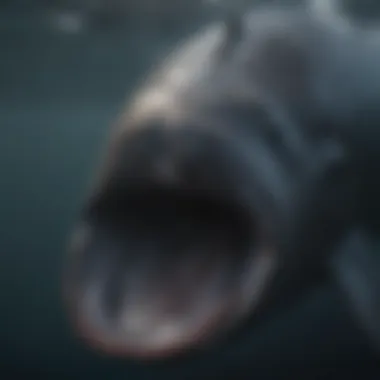
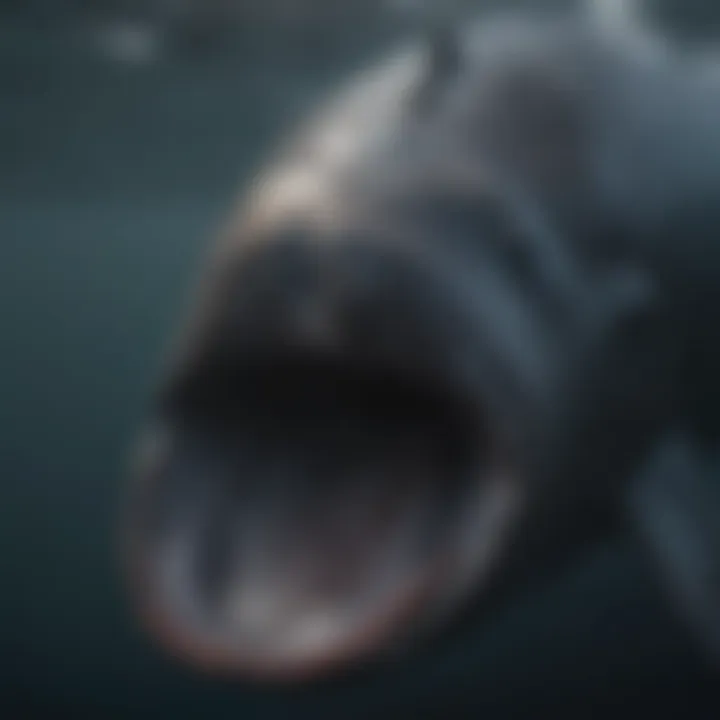
Physical Characteristics
Delving deeper into the physical realm, we unravel the anatomical marvels of sperm whales. Their sheer size, with males reaching up to 20.5 meters in length, commands awe and respect in marine circles. The unique composition of their spermaceti organ, responsible for buoyancy control and sound production, underscores their adaptation to the challenges of ocean life. Exploring the intricate details of their flippers, flukes, and skin texture provides insights into how these features enhance their survival in diverse marine environments.
Historical and Cultural Significance
Mythology and Folklore
Venturing into the realms of myth and legend, we uncover the cultural significance of sperm whales across civilizations. From ancient seafaring traditions that revered these creatures as symbols of strength and wisdom to contemporary folklore that portrays them as guardians of the seas, their presence permeates human narratives. Unraveling the intertwined relationship between sperm whales and human cultures sheds light on the enduring fascination that spans centuries.
Sperm Whales in Literature
In the realm of literature, sperm whales have left an indelible mark, inspiring renowned authors and poets to incorporate their majestic aura into tales of the sea. From Herman Melville's iconic novel 'Moby Dick' to contemporary works that explore themes of nature and conservation, their enigmatic allure continues to captivate literary enthusiasts. By dissecting the portrayal of sperm whales in various literary works, we gain a deeper appreciation for the cultural resonance and symbolic weight they carry in artistic expressions.
Behavioral Patterns and Social Structure
In this section, we delve deep into the behavioral patterns and social structure of sperm whales, shedding light on the intricacies of their interactions and group dynamics. Understanding these aspects is crucial to comprehending the overall ecosystem in which these majestic creatures thrive. Sperm whales exhibit remarkable intelligence and organization within their pods, showcasing a complex social framework that involves communication, cooperation, and hierarchy. By exploring their behavioral patterns and social structure, we gain valuable insights into how these marine giants navigate their environment and sustain their existence.
Communication and Vocalizations
Echolocation Abilities
Echolocation abilities play a pivotal role in the survival and hunting tactics of sperm whales. Through the emission of high-frequency sounds and interpretation of the resulting echoes, these creatures can navigate the dark depths of the ocean with precision. The key characteristic of echolocation lies in its effectiveness in detecting prey, communicating with other pod members, and navigating vast underwater territories. This unique feature equips sperm whales with a distinct advantage in their marine habitat, allowing them to thrive in various environmental conditions. While echolocation aids in their survival, it also highlights the evolutionary adaptations that have sculpted their sophisticated sensory capabilities.
Complex Dialects
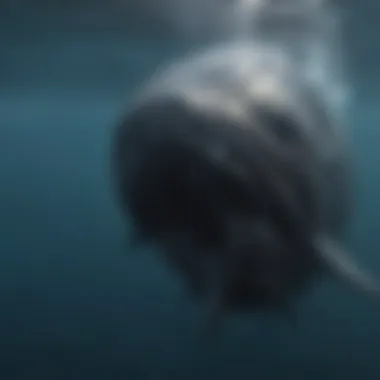

Within the realm of sperm whales, complex dialects play a significant role in reinforcing social bonds and maintaining group coherence. These distinctive communication patterns enable pod members to convey intricate information, express emotions, and coordinate group activities effectively. The key characteristic of complex dialects is the diverse range of vocalizations and signals used by sperm whales to interact and communicate within their social units. This sophisticated form of communication enhances their cooperative behaviors and fosters a sense of community within the pod. Despite the intricacies of these dialects, they also reflect the deep-rooted social connections and shared experiences that define the collective identity of sperm whales.
Group Dynamics and Family Units
Matriarchal Society
The concept of a matriarchal society underscores the importance of female leadership and influence within sperm whale pods. In these social structures, older females hold key roles in decision-making, resource allocation, and nurturing younger members. The key characteristic of a matriarchal society is the guidance and wisdom provided by experienced female whales, ensuring the cohesion and well-being of the entire pod. This unique feature empowers female sperm whales to shape the group dynamics, pass down knowledge through generations, and maintain lineage continuity. While matriarchal societies reflect a complex hierarchy, they also embody a balance of power that enhances the resilience and success of sperm whale pods.
Calf Development
The developmental stages of sperm whale calves are pivotal in understanding the intergenerational transmission of behaviors and social norms within their pods. Calf development encompasses the nurturing, teaching, and protection provided by adult whales to young offspring as they grow and learn to adapt to their marine environment. The key characteristic of calf development lies in the gradual acquisition of skills, behaviors, and communication patterns under the guidance of elder pod members. This unique feature highlights the importance of familial bonds, learning processes, and social integration within sperm whale communities. As calves progress through different life stages, their interactions with peers and adults contribute to the cohesion and sustainability of the pod structure.
Feeding Habits and Hunting Strategies
In this section of the article, we delve into the crucial aspect of feeding habits and hunting strategies of sperm whales. Understanding the dietary preferences and hunting techniques of these marine mammals is essential as they play a significant role in their survival and ecosystem balance. By examining how sperm whales hunt for prey and their preferred food sources, we gain a deeper insight into their behavior and ecological impact.
Dietary Preferences and Foraging Behaviors
Giant Squid Predation
Giant squid predation is a key aspect of sperm whale foraging behavior, showcasing their unique hunting skills and adaptation to deep-sea environments. The ability of sperm whales to prey on giant squids highlights their position as apex predators in the marine food chain. Their specialized techniques for capturing these elusive creatures demonstrate the effectiveness of their hunting strategies in acquiring large quantities of nourishment. Giant squid predation not only sustains the sperm whale population but also regulates the abundance of squid species in the ocean, showcasing the critical role these mammals play in maintaining ecological balance.
Deep Diving Techniques
Deep diving techniques are essential for sperm whales to access their preferred prey species at great depths in the ocean. By diving to impressive depths, sperm whales can target squid species that dwell in the darkest and most remote parts of the ocean. Their ability to navigate these extreme conditions and execute successful dives reflects their evolutionary adaptations for efficient foraging. Deep diving allows sperm whales to exploit food resources that are inaccessible to other marine predators, giving them a competitive advantage in resource acquisition. However, the extensive energy expenditure involved in deep diving poses physical challenges and metabolic demands for sperm whales, influencing their hunting strategies and foraging behaviors.
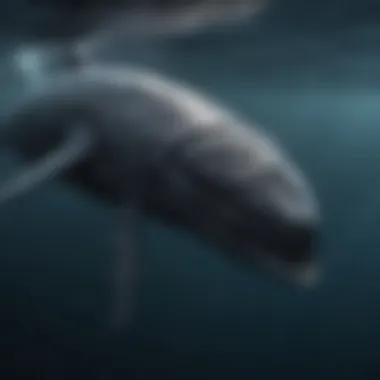
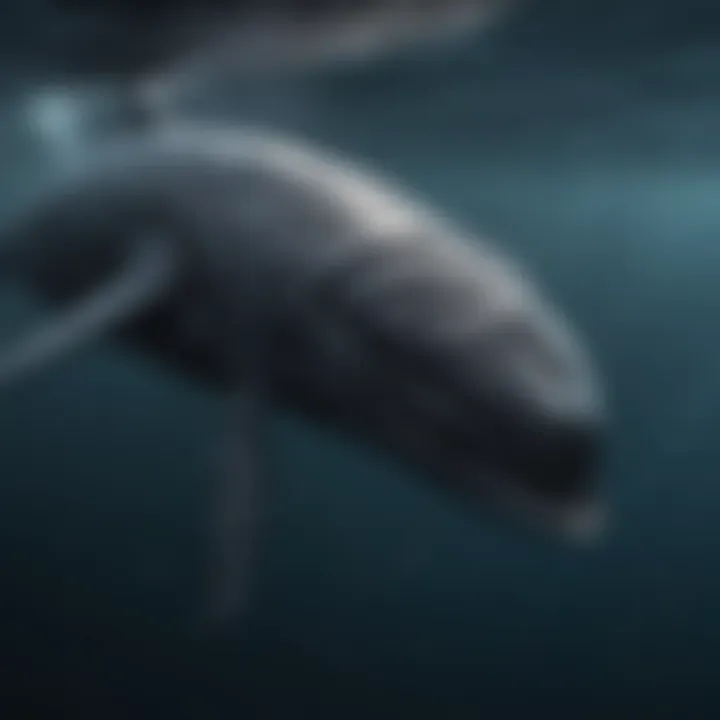
Impact on Marine Ecosystems
Role as Apex Predators
The role of sperm whales as apex predators is crucial in maintaining the health and stability of marine ecosystems. As top-level predators, sperm whales help regulate the population of squid species, preventing overpopulation that could disrupt the balance of the food web. By preying on large predatory species like giant squids, sperm whales contribute to controlling the numbers of these organisms, thus preventing potential cascading effects on lower trophic levels. The position of sperm whales as apex predators underscores their significance in preserving the biodiversity and structure of oceanic ecosystems.
Ecological Balance
The ecological balance maintained by sperm whales is vital for the overall health of marine environments. Through their foraging activities and hunting strategies, sperm whales influence the distribution and abundance of species within their ecosystem. By managing the population dynamics of their prey species, sperm whales indirectly impact the entire food web, from squid populations to fish and other marine organisms. The ecological balance maintained by sperm whales supports a diverse and stable ecosystem, where each species plays a distinct role in maintaining the delicate harmony of oceanic life.
Conservation Efforts and Future Prospects
In this section, we delve into the pivotal aspect of Conservation Efforts and Future Prospects concerning sperm whales. Conservation efforts play a crucial role in safeguarding the marine ecosystem and maintaining the delicate balance of nature. By implementing strategic measures to protect sperm whale populations, we can ensure the longevity of these magnificent creatures and preserve biodiversity in our oceans. Future prospects focus on sustainability and long-term strategies to mitigate human impacts on marine life, emphasizing the urgent need for proactive conservation initiatives.
Threats and Challenges
Whaling History
Whaling history holds a significant place in the narrative of sperm whales and their conservation. The exploitation of sperm whales for commercial whaling has led to a drastic decline in their populations, pushing them to the brink of extinction. Understanding the historical context of whaling is essential in addressing the challenges faced by these marine giants today. By reflecting on past mistakes and enacting stringent regulations, we can move towards effective conservation practices to protect these vulnerable species.
Human Impact
The human impact on sperm whales poses a grave threat to their survival and well-being. Pollution, habitat destruction, and climate change have adverse effects on marine ecosystems, disrupting the natural balance and endangering species like the sperm whale. Acknowledging the destructive impact of human activities is crucial in shaping conservation strategies and advocating for sustainable practices. Through education, awareness, and collective action, we can strive to lessen our footprint and create a more harmonious coexistence with these majestic marine mammals.
Conservation Initiatives
Protection Measures
Protection measures are essential components of conservation efforts aimed at safeguarding sperm whales and their habitats. Designating marine protected areas, enforcing strict regulations on whaling, and curbing illegal fishing practices are crucial steps in ensuring the safety and well-being of these creatures. By implementing proactive protection measures, we can create sanctuaries where sperm whales can thrive without fear of human interference, contributing to the overall health of the marine ecosystem.
Research and Monitoring
Research and monitoring initiatives play a vital role in understanding sperm whale behavior, population trends, and ecological dynamics. Through scientific research, we can gather valuable data on sperm whale migrations, feeding habits, and breeding patterns, enabling us to make informed decisions regarding conservation strategies. Continuous monitoring of sperm whale populations helps us assess the effectiveness of conservation efforts, identify emerging threats, and adapt conservation measures accordingly.



